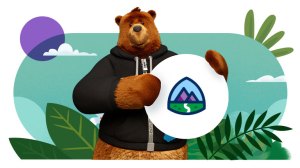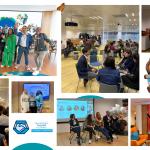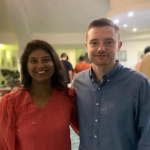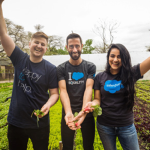Over the first two parts of this series (read Part One and Part Two here), we’ve talked about making change stick by sharing core values, doing things by design and having a clear ‘why’.
We’ve covered the importance of people and purpose, embracing technology and serving society, and always keeping the customer at the heart of these decisions. Now it’s time to move on to one of my favourite subjects; learning.
Bridging the gap
Without a doubt, learning is the catalyst for capability, capacity and culture in corporate change management. After all, as Nelson Mandela said: “Education is the most powerful weapon we can use to change the world.” But we’re currently facing a digital divide, with a majority of the current and prospective workforce thinking they lack the proper digital skills to prepare them for the future. And any skill gap will only become more apparent when companies try to pick up the pace and adopt widespread tech change. I may be biased but it would be remiss of me not to mention Trailhead at this point. Consider that, whether you’re an individual who is new to Salesforce’s technology or a company focused on large-scale digital transformation, there are four main pillars that pave the way to skills development work. These are:
- Digital Savviness, a full understanding of technology in terms of its potential and future impact
- Technical Skills, the knowledge and expertise that people need to do their job, perhaps evidenced by certifications
- Power Skills, ‘softer’ things like analytical thinking, the ability to innovate, communication and leadership skills, and social influence
- Hands-On experience. To blaze a trail, people need the opportunity to use their skills and learn from real-world situations, rather than just learning about it theoretically.
Trailhead is the perfect place to start up-skilling across all these areas (find out more in this previous blog). The post-pandemic workforce has become both flexible and hybrid so learning programmes need to follow suit, and the promise of Trailhead lies in its ability to provide both accessible self-paced learning as well as expert-led courses that meet specific needs.
Leading capability and competence
However, any kind of learning can quickly go off-course without clear direction as to where new skills should be applied, which is why strong leadership is crucial to successfully leveraging capability and competence. At Salesforce, for example, we’ve embedded a yearly V2MOM process (which stands for Vision, Values, Methods, Obstacles and Measures), launched by a company-wide kick-off by CEO Marc Benioff. This is an opportunity to intentionally cascade and align the things we want to focus on, individually, as teams and across the company, to truly create value.
On the customer side, Standard Bank is at the forefront of training people for the value they can add to clients, rather than training for training’s sake. Recently, they’ve undertaken a step change in using technology to connect more deeply with their clients and serve them more efficiently. To this end, the bank has supported 20,000 employees to become Salesforce Rangers (the highest rank you can achieve on Trailhead) in record time.
As Margaret Nienaber, COO of Standard Bank, summarised: “We’ll continue to foster a growth mindset with an emphasis on ensuring we take every single employee in the organization with us on this journey of personal growth and adjusting to the future needs of the clients.”
Intentional Workplace Culture
Implicit within Margaret’s quote above is Standard Bank’s intentionality in creating the right culture, ensuring every single person involved is along for the ride and open to learning. This bodes well for its success.
Unfortunately, when I’ve seen digital change management programmes go awry in the past, it’s been because the focus has been on building the technology in time for a ‘go-live’ date and forgetting to engage all the different teams of stakeholders needed from the start. As I said in the second part of this blog, the real stars in business transformation are always the people.
On this point, I recently read a book called ‘Turn the Ship Around!’ by US submarine commander Captain David Marquet. Early in my career, I spent some time in the Royal Navy, so his ethos on workplace culture really resonated with me. He imagines a workplace where everyone engages and contributes their full intellectual capacity, a place where people are healthier and happier because they have more control over their work and a place where everyone is a leader. A place where people feel valued and proud to be part of something bigger than themselves.
In other words, a place where everyone can unlock their potential. To me, this is the epitome of culture by design.
Integrating inspiration with resilience
I’m happy to report that Salesforce has this intentional culture, which rests on five shared values – trust, customer success, innovation, equality, and sustainability. But it goes deeper than that. For example, those values translate into our integrated philanthropic approach called the 1-1-1 operating model, which is how Salesforce gives back 1% of our time, 1% of our equity and 1% of our product to help organisations that need it. And because this is built into the company’s operating model there is built resilience to weather changes in the business and environment. We also invite others to commit their product, time and resources in the same way to support integrating philanthropy into their business from an early stage, via Pledge 1%.
It’s one of the ways that demonstrates how we’re delivering on our intention to truly be a platform for change. But if you’re at the beginning of your change management journey, don’t be fooled into thinking it happens overnight. Change can feel very slow to get going until suddenly the momentum takes hold. Remember, when you’re embarking on a new platform program, your business is becoming more and more connected, at speed and globally. It’s a process that takes grit, determination and the acceptance of ambiguity, as well as imagination.
So, when it comes to making change stick, being open to learning matters. Resilience matters. Intentionality matters. Culture is built by Trailblazers, who are by definition lifelong learners as well as pioneers, innovators, movers and shakers. Leaders who leave a path for others to follow and, most importantly, people who build a better world for others.
Does this mean getting comfortable? Absolutely not. In fact, perhaps the key learning for us all when it comes to capability, capacity and culture in change management is that we need to get comfortable with being uncomfortable. That’s when you know the real changes are taking place.
I hope this series on Making Change Stick has inspired you and maybe even challenged you as you drive change. Please get in touch if we can help you and your organisation get to and through the transformation you need.

























